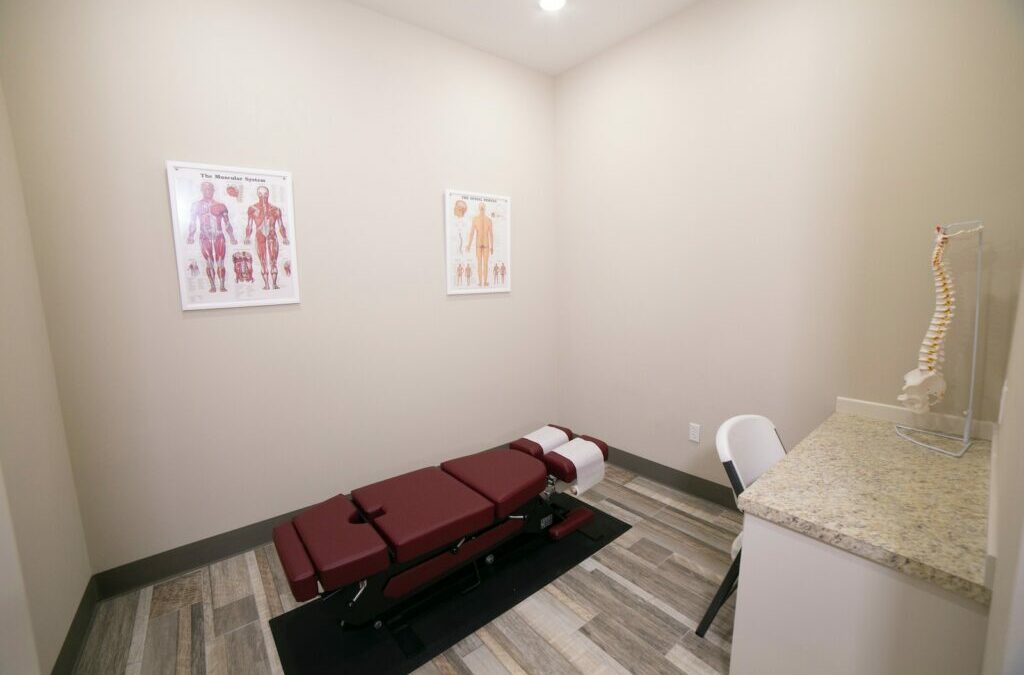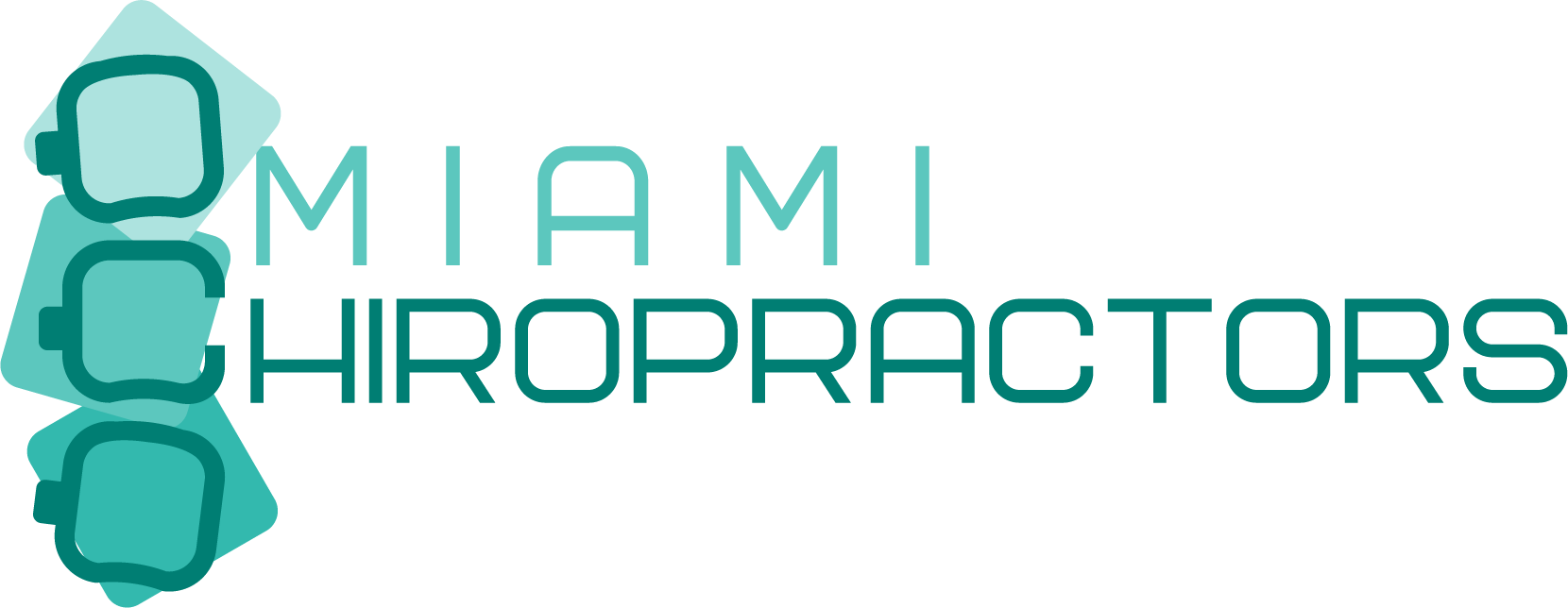
by pixeladmin7 | Jan 12, 2024 | Uncategorized
Photo by Edward Muntinga on Unsplash
Pain Relief and Beyond
Chiropractic care is often sought after for relief from various types of pain, with studies noting its effect on back, neck, and joint discomfort. It’s a practice based on the premise that proper alignment of the body’s musculoskeletal structure, particularly the spine, enables the body to heal itself without surgery or medication. Manipulation is used to restore mobility to joints restricted by tissue injury caused by a traumatic event or repetitive stress.
Regular chiropractic sessions can offer more than just pain management. Patients frequently report improvements in their range of motion and overall mobility. The hands-on nature of chiropractic treatment can also contribute to a decrease in blood pressure and improvements in nerve function. Not limited to adults, chiropractic care extends its benefits to different ages, often tailoring techniques to each individual’s needs and health concerns.
Chiropractors are trained to use a variety of techniques, including spinal manipulation and manual adjustments, to correct alignment issues and support the body’s natural healing abilities. Beyond physical alignment, some individuals note enhanced sleep quality and immune system function after beginning treatment. The emphasis on preventive care helps individuals maintain optimal health and avoid potential discomfort before it begins.
Understanding Chiropractic Care
Chiropractic care is a health discipline that focuses on the musculoskeletal system, particularly the spine. Chiropractors are healthcare professionals who utilize hands-on spinal manipulation to align the body’s musculoskeletal structure, primarily the spine, aiming to enable the body to heal itself without surgery or medication.
Education and Licensure:Chiropractors undergo rigorous education, earning a Doctor of Chiropractic (D.C.) degree. Their education includes a combination of classroom learning, laboratory work, and clinical experience. Chiropractors are also required to pass the National Board of Chiropractic Examiners exam to obtain a license to practice.
Services Provided:
Spinal manipulation: Adjustments to correct spinal alignment and improve function.
Health advice: Tips on posture, ergonomics, and exercises to support treatments.
What to Expect:Patients seeking chiropractic care often do so for neck and back pain relief. During a chiropractic session, they may hear the sound of the spinal adjustments, which is the release of gas from the joint spaces. Contrary to some concerns, this is a normal part of the manipulation process.
Here’s a simplified view of chiropractic care:
FocusMethodsGoalSpine and musculoskeletalNon-invasive treatmentsRestore function, reduce pain
Chiropractic care has gained popularity for its holistic approach to treating pain and promoting overall health. While benefits are numerous, it is essential to consult with a healthcare provider to ensure chiropractic care is appropriate for one’s specific health needs.
Common Conditions Treated by Chiropractors
Chiropractic care often focuses on pain relief and correcting alignment issues. They primarily address various forms of back pain, which can range from low back pain to chronic back pain as well as neck pain. These pains can stem from poor posture, injury, or chronic conditions.
Headaches and migraines are also within their realm of expertise. Chiropractic treatment can reduce the frequency and intensity of migraines by adjusting the spine and relieving tension in the neck.
Inflammation, a common culprit behind joint pain and stiffness, can be alleviated through chiropractic care. Adjustments aim to improve joint mobility and enhance nervous system function, which may reduce inflammation.
Conditions like sciatica, marked by leg pain caused by a pinched nerve, can also be mitigated. Similarly, chiropractors treat degenerative conditions like osteoarthritis, providing relief from discomfort and improving joint function.
Moreover, for individuals with scoliosis, characterized by an abnormal curvature of the spine, chiropractic care can be a part of a comprehensive management plan, often helping to manage pain and maintain mobility.
Back Pain & Sciatica: Spinal adjustments can provide relief from discomfort.
Neck Pain: This can improve from targeted manipulation, especially due to poor ergonomics.
Headaches & Migraines: Adjustments may lessen the severity and frequency.
Arthritis: Gentle manipulation could ease the symptoms.
Scoliosis: While not curative, chiropractic care may help in pain management.
Chiropractors utilize their expertise to treat these ailments, aiming to improve their patients’ quality of life through non-invasive techniques.
Benefits of Chiropractic Adjustments
Chiropractic care focuses on alleviating pain and improving bodily functions by adjusting the spine and other parts of the musculoskeletal system. This hands-on therapy typically involves spinal adjustments, manipulation of joints, and a variety of exercises to facilitate healing and promote overall wellness.
Pain Management and Relief
Chiropractic adjustments are a cornerstone of chiropractic therapy, primarily aimed at pain relief. Through careful manipulation of the spine, chiropractors can reduce discomfort caused by conditions such as back pain, neck pain, and headaches. Patients often observe a significant reduction in pain levels, facilitated by the unlocking of spinal joints and alleviation of nerve pressure.
Back and Neck Pain: Targeted spinal adjustments may help ease back and neck discomfort.
Headaches: Adjustments and neck manipulations can lessen the frequency and intensity of headaches.
Enhanced Mobility and Flexibility
Regular chiropractic adjustments can lead to improved mobility and flexibility. By realigning joints and vertebrae, chiropractors enhance joint function and promote a better range of motion. People with stiff joints or limited mobility due to injuries or muscle spasms often experience noticeable improvements after undergoing chiropractic care.
Increased Range of Motion: Realignment helps restore proper joint mobility.
Muscle Relaxation: Techniques like soft-tissue therapy relax muscles and release tension in fascia.
Improved Posture and Musculoskeletal Health
Chiropractic care is instrumental in correcting and maintaining posture, particularly for individuals who spend long hours in seated positions or engage in activities that strain the musculoskeletal system. Therapeutic exercises and stretches prescribed by chiropractors strengthen the core muscles, support proper alignment, and bolster the health of the musculoskeletal system.
Postural Correction: Adjustments can correct misalignments, improving overall posture.
Musculoskeletal Support: Exercises and stretching programs are designed to maintain musculoskeletal stability and prevent future injuries.
Holistic Approaches and Lifestyle Benefits
When someone visits a chiropractor, they not only receive care for their spine but also gain holistic wellness benefits that affect their overall lifestyle, from their eating habits to their sleep patterns.
Focus on Nutrition and Diet
A chiropractor often provides guidance on nutrition and diet to support the body’s natural healing processes. For instance, they may recommend anti-inflammatory foods to aid in recovery or foods rich in calcium for bone health. Incorporating such dietary changes can have a positive impact on weight loss and the immune system, especially important for adults looking to maintain their health and children in developmental stages.
Stress Reduction and Better Sleep
Part of holistic chiropractic therapy includes techniques for stress reduction and promoting better sleep. Chiropractic adjustments can lead to improved relaxation of the body, possibly resulting in more restful sleep. Better sleep, in turn, can decrease stress levels, forming a beneficial cycle. Chiropractors may also teach breathing exercises or meditative practices to help individuals manage stress daily.
Advantages for Different Age Groups
Chiropractic care is tailored to the needs of different age groups. For children, the focus might be on promoting proper growth and development, while adults may receive treatment that helps in the maintenance of mobility and well-being. Regular adjustments can support active lifestyles and may contribute to a more robust immune system, which is particularly vital as one ages.

by pixeladmin7 | Jan 5, 2024 | Uncategorized
Photo by Stuart Poulton on Unsplash
A San Antonio Legacy in Chiropractic Healing
The Zone Technique, developed by Dr. Thurman Fleet in San Antonio, Texas, revolutionized the chiropractic field when it was introduced in 1931. Fleet had a vision to create a system that holistically approached the human body’s health, focusing on the restoration and maintenance of balance within the body. By conceptualizing the body into six distinct zones, each corresponding to a particular set of related functions and body parts, the Zone Technique provides a framework for identifying and addressing health issues at their root.
Dr. Fleet’s methodology quickly gained traction for its effectiveness in promoting healing. His pioneering work laid the foundation for a broad spectrum of therapeutic approaches within chiropractic care. Chiropractors who utilize the Zone Technique treat the body as a cohesive ecosystem, where the optimal function of one zone can influence the overall health and wellness of the individual. Their goal is to stimulate the body’s innate healing capabilities by targeting specific spinal cord areas, hoping to trigger a response from the brain that promotes balance and recovery across the body’s systems.
The Zone Technique is still applied today, with practitioners like Dr. Peter Goldman continuing to refine the original principles laid out by Dr. Fleet. This testament to the enduring relevance of the Zone Technique highlights its potential for providing a way to achieve better health and well-being. As it was decades ago in Texas, the technique remains a valuable tool for modern practitioners committed to helping people heal.
Historical Context and Origins
The Zone Technique’s emergence in the early 20th century marked a significant stride in chiropractic healing methodologies. Dr. Thurman Fleet’s innovative approach in San Antonio, Texas laid the groundwork for what would evolve into a distinctive form of chiropractic care.
Dr. Thurman Fleet’s Contributions
Dr. Thurman Fleet was a pivotal figure in chiropractic history, having established the foundations of Zone Therapy in 1931. He aimed to transcend the limitations of traditional chiropractic practices of his time. Fleet’s concepts were infused with holistic perspectives, considering the body’s bioenergetic fields and potential zones prone to disturbances leading to health issues.
Evolution into the Zone Technique
Zone Therapy, initially crafted by Dr. Fleet, gradually evolved into the Zone Technique—a refined chiropractic healing practice. After Fleet’s groundwork, the Zone Technique found new life and expression through the work of practitioners such as Dr. Peter Goldman. The Zone School of Healing stands as a testament to the technique’s ongoing development and adaptability within the realm of chiropractic care. Its principles are directly linked to the holistic strategies that Fleet envisioned, underpinned by the understanding of body zones established by chiropractic pioneers like D.D. Palmer.
Understanding the Zone Technique
The Zone Technique is a unique chiropractic method that addresses imbalances within the body’s six main systems through spinal cord stimulation and brain center alignment.
The Six Zones of the Human Body
Each zone corresponds to a specific physical and physiological function:
Glandular System – Encompasses hormonal balance and endocrine function.
Eliminative System – Responsible for removing toxins and waste.
Nervous System – Governs sensation, movement, and control of bodily functions.
Digestive System – Deals with the breakdown and absorption of food.
Muscular System – Includes muscle function and health.
Circulatory System – Circulates blood and manages the cardiovascular health.
Role of Brain Centers and Nerve Connections
The body is viewed as an electrical machine with the brain functioning as the positive pole and the corresponding body zones as negative poles. Brain centers are pivotal in controlling the flow of neural impulses through the nervous system to various organs and tissues. The Zone Technique aims to reset these brain centers to ensure optimal nerve signaling and proper functionality of each zone.
Balancing the Positive and Negative Poles
Balancing these poles is crucial for overall health. Disturbances in this balance, due to physical, emotional, or chemical stress, may lead to discomfort or disease. The Zone Technique seeks to restore this balance by targeting specific spinal levels tied to each zone, facilitating the body’s natural healing processes.
Zone Technique in Practice
The Zone Technique is grounded in the approach of identifying and treating six health-related zones of the body through spinal cord manipulations to restore patients’ overall balance and wellness.
The Process of Applying Zone Therapy
Zone Therapy begins with the practitioner examining the patient’s spinal cord to locate disturbances that correlate with one of the six zones. Once identified, these misaligned spinal vertebrae are stimulated to restore nerve flow and achieve balance. The technique postulates that such stimulations can alleviate various discomforts by allowing the body to heal itself.
Zone 1: Glandular System
Zone 2: Eliminative System
Zone 3: Nervous System
Zone 4: Digestive System
Zone 5: Muscular System
Zone 6: Circulatory System
Case Studies: Addressing Systemic Health Imbalances
Numerous case studies by Zone doctors suggest that addressing systemic health imbalances through Zone Therapy can lead to the resolution of chronic conditions including back pain. For instance, patients with musculoskeletal cases have reported significant relief from pain and restoration of function following treatment.
Patient A: Suffered from chronic back pain; imbalance in Zone 5.
Patient B: Experienced persistent digestive issues; imbalance in Zone 4.
Advancements by Dr. Peter Goldman
Dr. Peter Goldman, considered one of Dr. Thurman Fleet’s top students and a proponent of Palmer’s real chiropractic principles, has refined the original Zone Therapy into what is now the Zone Technique. Under his guidance, the method has evolved to incorporate a blend of traditional chiropractic healing methods with a particular focus on achieving systemic health balance, offering a unique and effective approach for those seeking relief from various health disturbances.

by pixeladmin7 | Dec 29, 2023 | Uncategorized
Photo by Thiago Cerqueira on Unsplash
Ensuring Spinal Health from the Start
When it comes to maintaining good health, people often overlook the potential benefits of chiropractic care for children. Pediatric chiropractors specialize in the care of infants, toddlers, and adolescents, focusing on the prevention and treatment of musculoskeletal issues. They provide gentle chiropractic adjustments to address various health concerns that can affect a child’s growth and development.
Chiropractic care for children isn’t just about correcting spine alignment; it plays a crucial role in supporting a child’s nervous system, which is integral to their overall health and wellbeing. With proper alignment, children’s bodies can better handle the stresses of growing up, from learning to walk to carrying backpacks at school. Regular visits to a pediatric chiropractor might help enhance neural plasticity, promote better immunity, and potentially improve behavioral and developmental conditions.
Parents are increasingly seeking out pediatric chiropractors to aid in the health of their children, noting improvements in issues such as sleep disturbances, digestive problems, and ear infections. While chiropractic care does not claim to cure these ailments, it aims to optimize the body’s capacity to heal and function, which can have positive effects on various aspects of a child’s health.
Understanding Pediatric Chiropractic Care
Pediatric chiropractic care focuses on the proper growth and development of children’s bodies through the maintenance and care of the spine and nervous system.
Growing Bodies and Chiropractic Benefits
Pediatric chiropractic care is designed to support the dynamic growth and development that occurs in infants, kids, and teens. The spine, housing the spinal cord, is a pivotal part of the nervous system which coordinates the body’s overall function. Proper spinal alignment and function are crucial because they can influence various bodily systems, including the immune and digestive systems. Chiropractors assert that regular adjustments can enhance a child’s immune response and digestive health.
Benefits for Infants: Gentle adjustments may help alleviate discomfort from conditions like colic and ear infections.
Benefits for Kids and Teens: For older children, chiropractic care may support the healthy development of the spine and posture.
Common Pediatric Conditions and Chiropractic Solutions
Chiropractic solutions aim to address and prevent common pediatric conditions by focusing on maintaining a well-aligned spine and a balanced nervous system. Here are some conditions that may see improvements with chiropractic interventions:
Colic, Acid Reflux, and Constipation: Adjustments may relieve digestive tension, fostering better functioning.
Ear Infections and Allergies: By aiding the immune response, chiropractic care might reduce the incidence and severity of these issues.
Asthma, Bedwetting, ADD/ADHD, Autism, and Behavioral Disorders: While not cures, consistent chiropractic care can be a part of a broader management strategy for these conditions, potentially easing symptoms and improving quality of life.
Through a non-invasive and drug-free approach, pediatric chiropractic care offers a supportive adjunct to conventional health care for the growing and evolving systems of children’s bodies.
Chiropractic Techniques for Children
Pediatric chiropractic care involves specialized methods tailored to the delicate structures of a child’s body. These techniques focus on reducing nerve interference and promoting the proper development of the spine and nervous system.
Gentle Adjustments and Techniques
Pediatric chiropractors utilize gentle adjustments to correct subluxations, which are misalignments of the spine causing nerve interference. They avoid traditional ‘cracking’, instead applying mild pressure to improve function. Massage and various exercises are commonly integrated into treatment to alleviate muscle tension and support the child’s developing musculoskeletal system.
Techniques:
Light fingertip adjustments
Soft tissue therapy
Cranial-sacral techniques
Special Considerations for Infants and Newborns
The focus for newborns and infants is on supporting developmental milestones and remedying conditions like torticollis, where an infant’s head is tilted, or issues with nursing due to tension or misalignment. Newborns may benefit from the Webster Technique, which is a specific chiropractic sacral analysis and diversified adjustment, primarily used to facilitate the mother’s pelvic alignment and nerve system function. This specific adjustment can also benefit newborns experiencing suboptimal positioning or being post-delivery stressed.
Care for Newborns and Infants:
Assess and monitor spinal development
Address birth-related subluxations
Provide gentle, non-forceful adjustments
Improving Childhood Health Outcomes
Taking a child to a pediatric chiropractor can play a pivotal role in boosting their overall health and well-being. Chiropractic care, often considered complementary medicine, focuses on maintaining healthy musculoskeletal and nervous systems to ensure a child’s developmental milestones are met and their immune system is robust.
Enhancing Immune Function and Illness Prevention
Chiropractic care can assist in strengthening a child’s immune system. A healthy spine is key to a child’s overall health, including the functioning of the immune system. Regular chiropractic adjustments may help to:
Improve immune response: Aligning the spine can remove nerve interference that hampers the immune system, potentially reducing the incidence of colds, ear infections, and the flu.
Support digestion: Proper spinal alignment can enhance the nervous system’s control over stomach functions, which can improve digestion and nutrient absorption, leading to better health.
Supporting Development and Behavioral Health
A pediatric chiropractor can also support key aspects of a child’s growth and behavioral health. Chiropractic treatments can influence several areas:
Brain Development: Alignments may positively affect brain activity, thereby supporting focus, concentration, and potentially alleviating conditions such as OCD.
Behavior: By promoting better sleep through spinal adjustments, chiropractors can help children maintain a balanced mood and behavior.
Posture and Pain: Good posture is essential for children as they grow. Chiropractic care can help alleviate back pain, growing pains, and even headaches, allowing them to maintain a healthy posture without discomfort.
Why Choose a Pediatric Chiropractor?
When considering chiropractic care for a child, it’s crucial to select a provider who specializes in pediatric care. Pediatric chiropractors have the specific qualifications and training to address the unique needs of a child’s developing body. They understand the intricacies involved in treating young patients, ensuring safety and effective therapy.
Trust is a cornerstone of pediatric chiropractic care. A good pediatric chiropractor is not only skilled but also creates a welcoming environment for children and their parents. They communicate openly about the treatment process, which often includes gentle adjustments tailored to a child’s body and the condition being treated.
Pediatric chiropractors have undergone thorough qualifications, including an undergraduate degree, four years at an accredited chiropractic college, and licensing exams. Their education equips them with the ability to offer various treatments aimed at enhancing overall health and addressing specific issues—ranging from postural corrections to aiding with certain chronic conditions.
Here’s a snapshot of potential benefits:
Alignment: Promoting proper spinal alignment for better posture and function
Nervous System: Aiding the balance and performance of the nervous system
Development: Supporting milestones and growth patterns
Immune System: Potentially enhancing immune response
Injury Recovery: Assisting in the recovery from falls or sports-related injuries
The goal of pediatric chiropractic therapy is not just to treat, but also to provide preventive care that supports a child’s wellbeing in the long run. Parents should always seek a practitioner who holds experience in pediatric care and one they feel comfortable with to manage their child’s chiropractic needs.

by pixeladmin7 | Dec 22, 2023 | Uncategorized
Soothing Comfort for Expectant Mothers
Photo by freestocks on Unsplash
Pregnancy often comes with its fair share of aches and pains as the body goes through dramatic changes to accommodate a growing baby. Chiropractic care has emerged as a popular approach to manage these discomforts. Tailored specifically for expectant mothers, this type of care focuses on maintaining spinal alignment and addressing the muscular and joint strain that can come with carrying a child.
Chiropractors who specialize in prenatal care are trained to handle the various physiological changes that occur throughout pregnancy. Through a series of adjustments, they work to balance the pelvis, reduce stress on the spine, and alleviate common issues like back pain and joints feeling the strain of extra weight. The non-invasive nature of chiropractic care makes it an appealing option for managing symptoms without relying on medication.
Moreover, some pregnant women find that regular chiropractic sessions can help control nausea, contribute to a healthier overall pregnancy, and might even positively influence labor and delivery times. A chiropractor’s role during this time is not just about providing relief but also about enhancing the body’s ability to perform during pregnancy. As with any medical treatment during pregnancy, it’s essential for women to consult with their healthcare provider before beginning chiropractic care to ensure it’s an appropriate option for their individual health needs.
Benefits of Chiropractic Care During Pregnancy
During pregnancy, many women experience a range of discomforts due to the physical and hormonal changes their bodies undergo. Chiropractic care can be a valuable approach to managing some of these changes, specifically targeting musculoskeletal pains and aiding in pelvic balance.
Alleviating Common Discomforts
Chiropractic care focuses on maintaining the health of the spinal column, discs, related nerves, and bone geometry. Many pregnant women find that chiropractic adjustments provide relief from back pain, hip pain, and joint pain which commonly occur as the body adapts to carrying the growing weight of a baby. By addressing misalignments, known as subluxations, chiropractors can alleviate stress in the spinal nerves and muscles. Treatments often extend to headaches and nausea, providing a non-pharmacological method of managing these issues. Additionally, by caring for the round ligament, chiropractors can mitigate the discomfort caused by ligament stretching.
Pelvic Balance and Baby Positioning
The pelvis provides support for the growing uterus and fetus; it’s essential for it to be in a balanced state. Chiropractic care aims for proper pelvic balance which can reduce the risk of intrauterine constraint, a condition that can limit the space available for the developing baby and potentially interfere with the natural positioning for delivery. By applying techniques, such as the Webster Technique, practitioners work to reduce tension in the pelvic ligaments and muscles, helping to establish the optimal environment for a baby to move into the best possible position for birth. This might also play a role in reducing the duration of labor and in some cases, preventing cesarean deliveries.
Chiropractic Techniques and Safety
When a woman is expecting, her body undergoes several changes that can affect her comfort and health. Chiropractic techniques tailored for pregnancy can assist in maintaining the spine’s alignment and contribute to a healthier and more comfortable pregnancy experience.
Chiropractic Adjustments
Chiropractic adjustments, also known as spinal manipulations, are at the heart of chiropractic treatment. These are generally regarded as safe during pregnancy. A licensed practitioner delicately realigns the spine and joints, which may help alleviate common discomforts like low back pain and neck pain. During pregnancy, the hormone relaxin loosens ligaments and joints in the pelvic area, which can lead to instability and discomfort; chiropractic adjustments can help address these issues.
Webster Technique: Specifically designed for pregnant women to help maintain a healthy pregnancy.
Gentle Movements: Adjustments are often milder compared to standard techniques.
Focus Areas: Especially beneficial for managing pain in the back, hips, and lower back regions.
Supplementary Therapies
Chiropractors may also include supplementary therapies to enhance the effectiveness of adjustments and provide additional relief.
Massage: Helps to reduce muscle tension and inflammation.
Acupuncture: May be used to alleviate pain and promote relaxation.
Physical Therapy: Includes exercises and stretches to strengthen the body and prevent discomfort.
These therapies complement chiropractic adjustments, focusing on the body’s overall function and comfort. Each has its safety profile and is often tailored to the individual needs of pregnant patients.
Preparation for Labor and Delivery
Chiropractic care is aimed at establishing pelvic balance and ensuring optimal positioning of the baby for a smoother labor and delivery. Here, discover how this non-invasive approach benefits both mother and child during this critical period.
Optimizing the Birth Process
Pelvic Balance: Chiropractors focus on pelvic alignment because a misaligned pelvis can limit the baby’s space, escalating the risk of complications like breech deliveries. Proper pelvic alignment helps the baby descend into the right position, which can decrease the chances of labor complications and cesarean delivery.
Spinal Nerve Stress: By maintaining spinal alignment, chiropractic care can reduce nerve stress, which is crucial for effective uterine function and contraction during labor. This may contribute to the management of pain and the progression of labor.
Postnatal Recovery
After Delivery: The body undergoes significant changes postpartum. Chiropractic care can continue to assist with the realignment of the spine and pelvis, helping to expedite postnatal recovery.
Long-term Well-being: The benefits of maintaining spinal and pelvic alignment reach beyond delivery, aiding new mothers as they return to their pre-pregnancy state. Care can also support overall well-being, potentially reducing spinal nerve stress that can be a result of labor and delivery.
Considerations and Communication with Healthcare Providers
When it comes to chiropractic care during pregnancy, it’s important for pregnant women to have clear communication with their healthcare providers. They need to ensure that all aspects of their prenatal care are well-coordinated and that possible costs are understood and planned for.
Collaborative Prenatal Care
Chiropractic care during pregnancy should be part of a coordinated approach with other prenatal healthcare providers such as obstetricians and midwives. Expectant mothers should have discussions about the integration of chiropractic care into their prenatal routine. The chiropractor can work in tandem with healthcare providers to ensure that the care is safe and beneficial for both the mother and the baby. It is beneficial to review any systematic reviews or research on the efficacy and safety of prenatal chiropractic care. A chiropractor can also offer guidance on nutrition and other lifestyle factors that contribute to a healthy pregnancy.
Insurance and Cost
Pregnancy can be a time when financial planning is crucial. It is, therefore, important to understand whether insurance covers chiropractic care and what the costs may be. Pregnant women should:
Check with their insurance provider to determine if chiropractic care is included in their plan and the extent of this coverage.
Discuss costs with their chiropractor, as many practitioners offer package deals or discounts for prenatal care.
Careful financial planning can help manage the expenses associated with a healthcare provider specializing in obstetrics and other forms of prenatal support, including chiropractic services.

by pixeladmin7 | Dec 15, 2023 | Uncategorized
Photo by Daria Nepriakhina 🇺🇦 on Unsplash
Chiropractic Solutions Tackle Digital Age Struggles
In today’s fast-paced digital world, many individuals are experiencing a common issue known as “Tech Neck.” This condition arises from the prolonged use of electronic devices, such as smartphones, tablets, and computers, which often results in poor posture, muscle strain, and discomfort in the neck and shoulders. As people continue to spend countless hours hunched over screens, the problem of Tech Neck has become increasingly prevalent and demands effective solutions.
Chiropractic care offers a range of solutions to alleviate the discomfort and potential long-term damage associated with Tech Neck. By realigning the spine, relieving muscle tension, and promoting better posture, chiropractors can help individuals find relief from this modern-day affliction. Through targeted adjustments, chiropractors address the root cause of the issue, making it a viable option for those seeking long-lasting results.
Additionally, chiropractic care can also provide valuable guidance on ergonomic practices, stretches, and strengthening exercises to help prevent the onset of Tech Neck. By incorporating these strategies into their daily routines, individuals can optimize their posture, build strength, and protect their neck and spine while embracing the digital age.
Understanding Tech Neck
Digital Age Dilemmas
In today’s world, the use of digital devices, such as mobile phones, laptops, and tablets, has become an integral part of our daily lives. However, this constant interaction with electronic devices has led to a common issue known as tech neck. Tech neck is a condition resulting from poor posture while using digital devices, which can lead to neck pain, stiffness, and headaches.
The main cause of tech neck is the unnatural downward angle that people adopt while using their cellphones or other devices, putting strain on the cervical spine. Prolonged periods in this position can contribute to a number of problems, including poor posture and discomfort in the neck and shoulders.
Symptoms and Signs
There are several symptoms and signs related to tech neck. These can include:
Neck pain and stiffness: Persistent discomfort in the neck is a primary indicator of tech neck. The unnatural angle while using digital devices can cause muscles and ligaments to become strained.
Headaches: The tension in neck muscles can lead to headaches, which may be exacerbated by eye strain from staring at screens for extended periods.
Posture problems: Over time, the habit of hunching over devices can result in poor posture, with shoulders curving forward and the head hanging low.
Eye strain: Prolonged exposure to screens can cause discomfort in the eyes, contributing to the overall effects of tech neck.
In order to counteract the negative effects of tech neck, it’s important to be aware of the symptoms and take preventative measures, such as adjusting the angle of your device, taking regular breaks, following proper ergonomics guidelines, and incorporating relevant exercises to strengthen the neck and upper back muscles. Developing these healthy habits can help mitigate the impact of tech neck in the digital age.
The Implications of Tech Neck
Neck and Shoulder Impacts
Tech Neck, a modern-day condition caused by constantly looking down at digital devices, can lead to a variety of health issues. One of the primary implications is the strain it places on the neck and shoulders. Prolonged periods of device usage can cause muscle tension, inflammation, and shoulder pain. The strain on the muscles can also impact the cervical spine, potentially contributing to reduced mobility and other spinal problems.
Proper posture plays a crucial role in maintaining neck and shoulder health. Weakening of the muscles due to poor posture can lead to upper back pain, numbness, and tingling sensations in the arms and hands. It is important to take periodic breaks from device usage to relieve tension and exercise the neck and shoulders. Staying mindful of posture and adjusting the device angle can also help minimize the risk of developing Tech Neck.
Spinal Health Considerations
Spinal health is greatly impacted by Tech Neck. The unnatural angle of the cervical spine caused by extended periods of looking down at a device can contribute to spinal problems like degenerative arthritis, herniated discs, and bone spurs. As muscles and joints grow weaker or develop inflammation, spinal health deteriorates, causing further issues with mobility and discomfort.
Muscles play a vital role in maintaining a healthy spine. When they grow weak due to Tech Neck, the risk of musculoskeletal issues increases. Nutrition is another important factor in spinal health. A balanced diet rich in essential nutrients can support the well-being of muscles, bones, and connective tissues, helping prevent or alleviate the symptoms of Tech Neck.
Ultimately, the implications of Tech Neck highlight the importance of maintaining proper posture and understanding the potential risks associated with digital device usage. By being aware of these risks and taking preventive measures, individuals can maintain their spinal health and mobility in the age of technology.
Preventive Measures for Tech Neck
Improved Posture
Poor posture is a major contributor to tech neck. To prevent it, it’s crucial to improve your posture by maintaining a neutral spine position. Keep your head up and your chin slightly tucked in, with shoulders pulled back. When sitting, engage in healthy sitting positions by distributing weight evenly on both hips and using lumbar support to maintain the natural curve of the lower back. Practicing mindfulness can help in cultivating a habit of proper posture throughout the day.
Regular Breaks and Exercises
Taking frequent breaks and engaging in regular exercises can help in preventing tech neck. During breaks, try stretches like gently tilting your head from side to side and up and down, and doing chin tucks to release muscle tension. Incorporate neck exercises into your daily routine to build strength and flexibility in the surrounding muscles. This could include activities like arching and stretching the neck and upper back to relieve muscle pain.
Ergonomic Adjustments
Ergonomics plays a significant role in preventing tech neck. Ensure that your workspace promotes good posture and minimizes strain on the neck and upper back. Position screens at eye level to avoid hunching over or craning the neck. If possible, consider using a standing desk or an adjustable chair with proper lumbar support. By making simple ergonomic adjustments, you can reduce the risk of developing tech neck and promote overall spine health.
[embedded content]
Chiropractic Solutions
In the digital age, tech neck has become a prevalent issue for many individuals spending extended periods in front of screens. To address this modern-day dilemma, chiropractic solutions have emerged, offering a range of treatments to help alleviate discomfort and improve posture.
Chiropractic Adjustments
Chiropractic care aims to realign the spine, relieve muscle tension, and improve posture as a means of reducing pain associated with tech neck. Expert chiropractors employ advanced techniques to assess and address any misalignment in the spine, promoting healing and the restoration of the spine’s natural curve.
Physical Therapy
Apart from chiropractic adjustments, physical therapy plays a vital role in combatting tech neck. A physical therapist or a chiropractor specializing in physical therapy can recommend specific strengthening exercises targeting the affected areas. These exercises help restore spine alignment, improve muscle strength, and facilitate better posture to prevent tech neck-related pain.
Additional Treatments
For more comprehensive care, additional treatments may be employed alongside chiropractic and physical therapy interventions. These can include:
Massage: A specialist in trigger point or other massage techniques can help to release muscle tension and ease discomfort associated with tech neck.
Steroid Injections and Nerve Blocks: In some cases, minimally invasive techniques such as steroid injections or nerve blocks may be administered to address persistent pain or inflammation.
Radiofrequency Ablation: This advanced treatment uses radio waves to heat and deaden the nerves responsible for transmitting pain signals to the brain, providing relief for chronic pain sufferers.
Sleep and Posture: Ensuring proper sleep and paying attention to one’s posture while using digital devices can prevent strain on the neck muscles, reducing discomfort and aiding recovery.
It is crucial to consult with a primary care provider or a chiropractic care expert to determine which combination of treatments will be most effective in managing tech neck. By adopting these interventions and engaging in a proactive approach to addressing the issue, it is possible to minimize the impact of tech neck on one’s overall quality of life.
Conclusion
The digital age has undoubtedly brought many conveniences and advancements to our lives, but it has also introduced new challenges to our well-being, such as Tech Neck. This condition, which results from the constant forward slumping and dropping of the neck due to extended use of digital devices, can cause discomfort and long-term issues if not addressed early on.
Chiropractic care can provide effective solutions for those suffering from Tech Neck. By focusing on realigning the spine and improving posture, chiropractic adjustments can alleviate the pain and discomfort caused by this condition. Moreover, chiropractors can offer guidance on ergonomic tips and stretches to help prevent future occurrences of Tech Neck.
Maintaining strong and flexible muscles is one of the keys to preventing Tech Neck. Engaging in simple exercises designed to reverse the negative effects of this condition can build strength in the neck and shoulder areas, thereby reducing the likelihood of developing Tech Neck. By incorporating these exercises into daily routines, individuals can promote better posture and overall well-being.
In summary, Tech Neck is a concerning issue that arises due to the increasing use of digital devices. Through chiropractic care, targeted exercises, and adherence to ergonomic principles, individuals can effectively address and prevent this condition, thus ensuring better comfort and well-being in the digital age.






